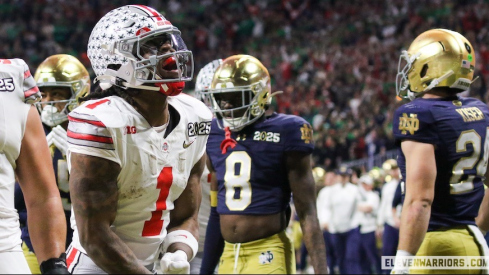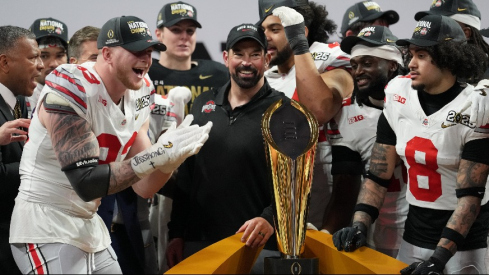
It is no secret that critics of Jim Tressel's Ohio State offenses focus their ire on one play in particular—Power, also known to Tressel (and Earle Bruce) as 'Dave.' Dave was Tressel's favorite play, and to critics, it was everything that was wrong with Tressel's style (it is difficult to argue with Tressel's ultimate record, however). Dave was blamed for everything from too much reliance upon the run game on first down (whether or not the play was Dave), to victories that were too close to comfort.
Yet 'Dave', which simply involves the playside blocking down, followed by a kickout block and the backside guard pulling and folding on the frontside linebacker, may be the most ubiquitous play in football today.

If this is the case, how could Dave have been such a detriment to Tressel's offenses? The problem for Tressel was that all too often he did not employ constraint plays to protect Dave. Both by formation and initial action, all too often the defense could identify what play was coming and worse, could attack this play without fear of being punished for over-aggressiveness. This was particularly true for the backside edge player. It was a common sight to see an unblocked backside defender take a shallow path and stop the play from behind, without fear of giving up backside contain to a bootleg, reverse, or other counter. The basic constraint idea of controlling this backside defender to open up the base play was rarely utilized by Tressel. As a result, Tressel's favorite play was not maximized and instead was often left still-born. Thus, Tressel's critics were not far off, but were focusing on the result, which was minimal yards on the Dave play, and not the cause, which was the fact that the Dave play had no chance of success without constraining the defense.
Yet upon further reflection, perhaps Tressel's goal with Dave was not always to maximize offensive opportunities. Instead, Dave at times was simply a way for Tressel to 'hold serve,' squeeze field position, and run clock. This style was often frustrating to many, but it was difficult to argue with the results. Nevertheless, it did not often win style points.
Hello Urban...GoodBye Dave???
In welcoming Urban Meyer and his power spread, many of those Tressel critics wistfully hoped that Dave was a distant memory. Yet those hoping will be disappointed. Meyer's offense is predicated upon I-formation run plays from the shotgun spread. One of those base plays is Dave (and its cousin counter trey). Meyer has long run Dave from his shotgun spread. For instance, at the :20 second mark of the Spring Game video below you will see 'Dave' run for a touchdown. It is the same down blocks, with the H-back kicking out and the backside guard pulling and folding. It simply coming from a shotgun, one back, H-back formation.
For those that really do not believe me, check out the clips from Meyer's Florida days starting at :40 here.
The biggest difference between Meyer and Tressel is not the play but Meyer's desire to constrain the defense from keying against the play. Meyer will run the play towards the halfback side, as shown at the :40 second mark in the above video. He will also run it away from the running back, wrong keying the defense. (1:00 mark). Meyer will send a slot in motion and run jet sweep or speed option off the power fake, preventing the defender who is being kicked-out from automatically crashing and wrong-arming the play. Finally, as demonstrated during the Spring Game, Meyer will fake Dave away from the halfback, then have the QB naked bootleg behind the unblocked defensive end. In so doing, this punishes a defensive end for doing what he did all too often to Tressel's offense: crashing down and making the play from behind. Now, if he does so he has left the quarterback with a wide open run-pass option in the open field.

The upshot is that Dave is alive and well at Ohio State. But the difference is that Meyer will make sure that a defense can never tee off against the play as they did under Tressel. Meyer's will instead attack the defense with Dave from a variety of angles and with constraint plays built in, ensuring not only that a defense that overpursues will be susceptible to big plays, but that the offense retains a favorable numbers advantage for the Dave play itself.

